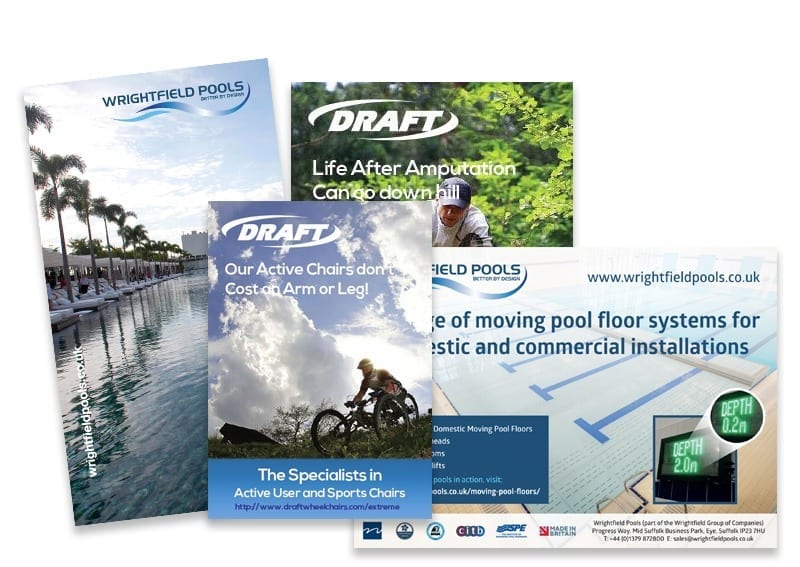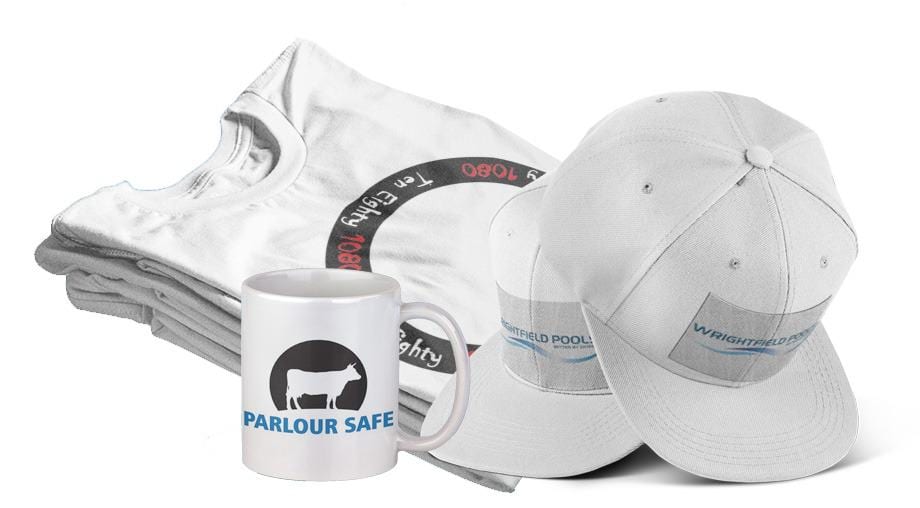Overview: On location video filmed at LAMMA show to explain and launch a new range of AEA training courses
Incorporates : Animation of logo, Interview, Footage from show, On screen text
Overview: Corporate video for use in International presentations to showcase manufacturing capabilities in 96 seconds
Incorporates : Motion Graphics, multiple location shots, language specific
Overview: In store product information video for Dunlopillo to explain product benefits
Incorporates : Voice over, exploratory animations and on screen text
Overview: On completion of a new product build photographs taken these used to create a show reel video
Incorporates : Product imagery, language specific text can be added to suit geographic market
Overview: Conference video filmed at Reaseheath Agricultural College to showcase the MEA conference and speakers
Incorporates : Interviews, Presentation snippets, action footage from the day
Overview: Multi location, multi camera video filmed at a Bristol farm and Veterinary practice to explain and launch a new MEA accreditation scheme
Incorporates : Interviews, Footage from farms, On screen text
Overview: Low cost video to showcase facilities for Play Centre to be used for SEO
Incorporates : Still photographs with effects to create motion and dynamic feel
Overview: For a corporate presentation client wanted movement of logos for video presentation
Incorporates : Motion graphics of logos
Overview: Information video using on screen techniques to explain the business development process and its benefits
Incorporates : Voice over and dynamic slide build
Above are some examples of videos we have produced.
Videos can be a great media to communicate a complex message. From full blown corporate videos, to product / service information pieces a well produced video can help create credibility and be used to stimulate action.
To find out more about how a video please call 01733 361729 or email solutions@bdolphin.co.uk
For more information about how to use videos on websites click here to contact a professional marketer click here

Looking to have Videos produced -see how to storyboard
Creating a storyboard for a B2B (business-to-business) company video involves planning and organising the visual and narrative elements of your video. Here are the steps you can follow to produce a storyboard for your B2B company video:
- Understand the Objective: Begin by clarifying the purpose and objective of your video. Determine what message you want to convey, the target audience, and the key points you want to highlight about your B2B company.
- Define the Script: Develop a script or a detailed outline that outlines the key scenes, dialogue, and narration for your video. The script should align with your objective and include the necessary information about your company, products, or services.
- Identify Key Scenes: Break down your script into individual scenes or shots. Identify the crucial moments that need to be visually represented. For example, if you want to highlight your company’s customer service, you may have scenes depicting a customer interaction, problem-solving, or testimonials.
- Sketch the Shots: Create rough sketches or drawings for each scene or shot in your storyboard. You don’t need to be an artist; simple stick figures or basic shapes can work. Focus on capturing the composition, camera angles, and basic actions happening within each shot.
- Add Descriptions and Notes: Alongside each sketch, write descriptions and notes that provide additional context. Include details like camera movements, transitions, key actions, props, and any text or graphics that will appear on the screen. This information will help the production team understand your vision.
- Sequence the Shots: Arrange the individual scenes or shots in the order they will appear in the video. Ensure that there is a logical flow and a smooth transition between each scene. Consider the pacing, rhythm, and emotional arc of the video to create an engaging narrative.
- Visualise the Style: Determine the visual style and tone for your video. This may include factors like colour palette, typography, graphics, animations, or any other visual elements that represent your brand or suit the video’s objective. Note these preferences in your storyboard.
- Add Audio and Music: If your video will include voiceover narration, dialogue, or music, indicate those elements in the storyboard as well. Specify the timing and duration of each audio component to synchronise it with the visuals effectively.
- Revise and Review: Once you have a draft of your storyboard, review it carefully. Make sure it aligns with your initial objectives and effectively communicates your message. Seek feedback from colleagues or stakeholders and make revisions as necessary.
- Finalise the Storyboard: Once you’re satisfied with the storyboard, create a final version. You can transfer the sketches, descriptions, and notes into a digital format using software or even PowerPoint. Add additional details like shot numbers, timecodes, or any other production-specific information.
Remember, the storyboard serves as a visual roadmap for your video production. It helps align the creative vision, guides the production team, and ensures that everyone involved is on the same page.
The Importance of Videos to and SME Manufacturer
Videos can be a highly effective marketing tool for a small to medium-sized enterprise (SME) operating in the manufacturing sector. In today’s digital landscape, where visual content is becoming increasingly prominent, videos have the potential to provide numerous benefits for SME manufacturing companies.
Firstly, videos can convey complex manufacturing processes and product features in a more engaging and easily understandable manner than text or images alone. This is especially crucial for the manufacturing industry, which often involves intricate processes and technical details that may be challenging to explain through traditional marketing materials. Videos allow SMEs to showcase their expertise, highlight the quality of their products, and demonstrate their production capabilities, ultimately fostering trust and credibility among potential customers.
Furthermore, videos have the power to humanise an SME manufacturing company. By featuring employees, showcasing the company’s facilities, and sharing behind-the-scenes glimpses of the manufacturing process, videos can create a sense of connection and authenticity. This can be particularly beneficial for SMEs looking to differentiate themselves in a competitive market by showcasing their unique brand story and values.
Another advantage of utilising videos is their ability to enhance SEO efforts. Video content tends to rank well on search engines, which can significantly improve the visibility of an SME manufacturing company’s website and increase organic traffic. This can lead to a higher number of potential customers discovering the company’s products and services, thereby expanding its reach and market presence.
Moreover, videos have a strong potential to resonate emotionally with the audience. Through storytelling and visuals, SME manufacturing companies can evoke emotions that lead to a stronger connection with potential customers. Whether it’s a customer success story, a look at the impact of their products on society, or the passion behind the company’s craftsmanship, videos can create an emotional bond that goes beyond mere product features.
Finally, videos are highly shareable on social media platforms and can go viral, which can be a cost-effective way for SME manufacturing companies to achieve wider exposure and brand recognition. The engaging nature of videos encourages users to interact with and share the content, thereby increasing the company’s visibility and potentially attracting new customers.
Videos can undoubtedly serve as a valuable marketing tool for SME manufacturing companies. They enable these companies to effectively communicate complex information, humanise their brand, improve SEO, evoke emotions, and achieve broader exposure. By integrating videos into their marketing strategy, SME manufacturing companies can enhance their overall brand image, engage with their audience on a deeper level, and ultimately drive growth and success in a competitive marketplace.


















